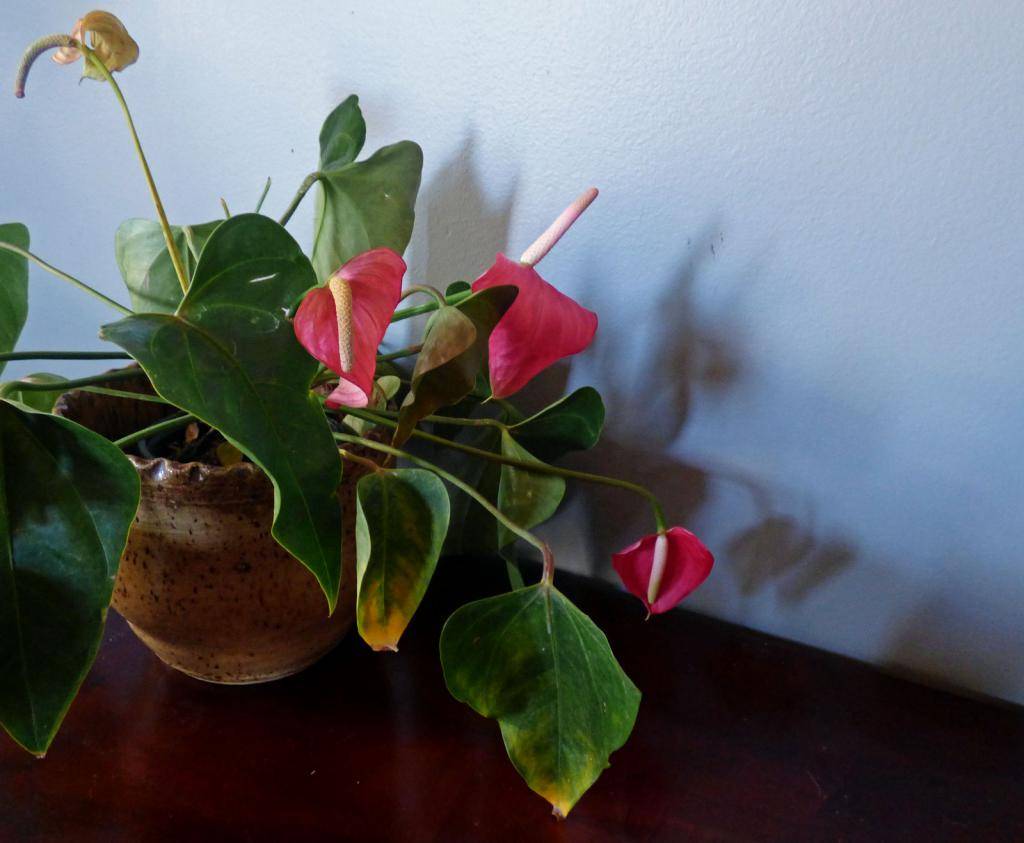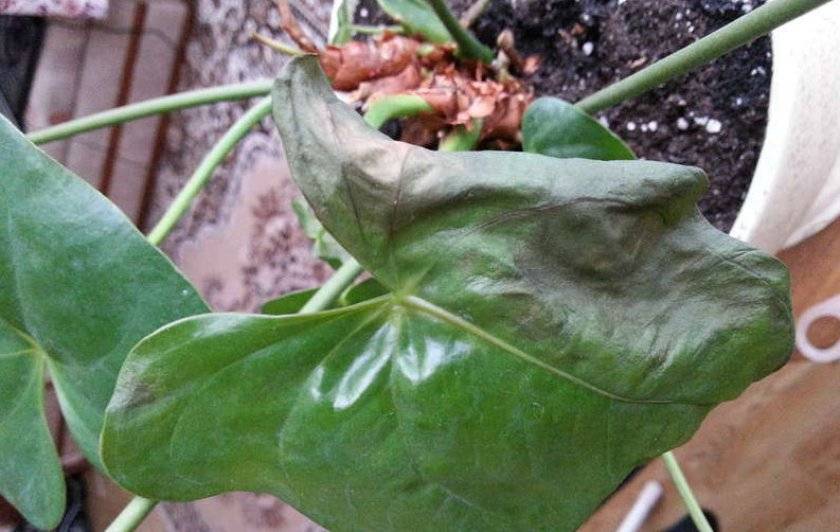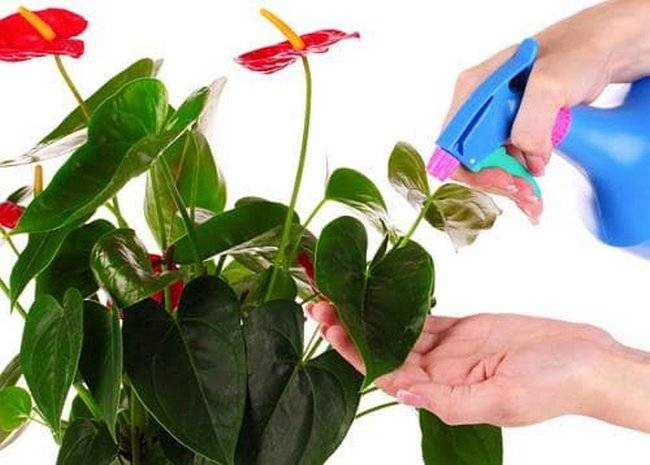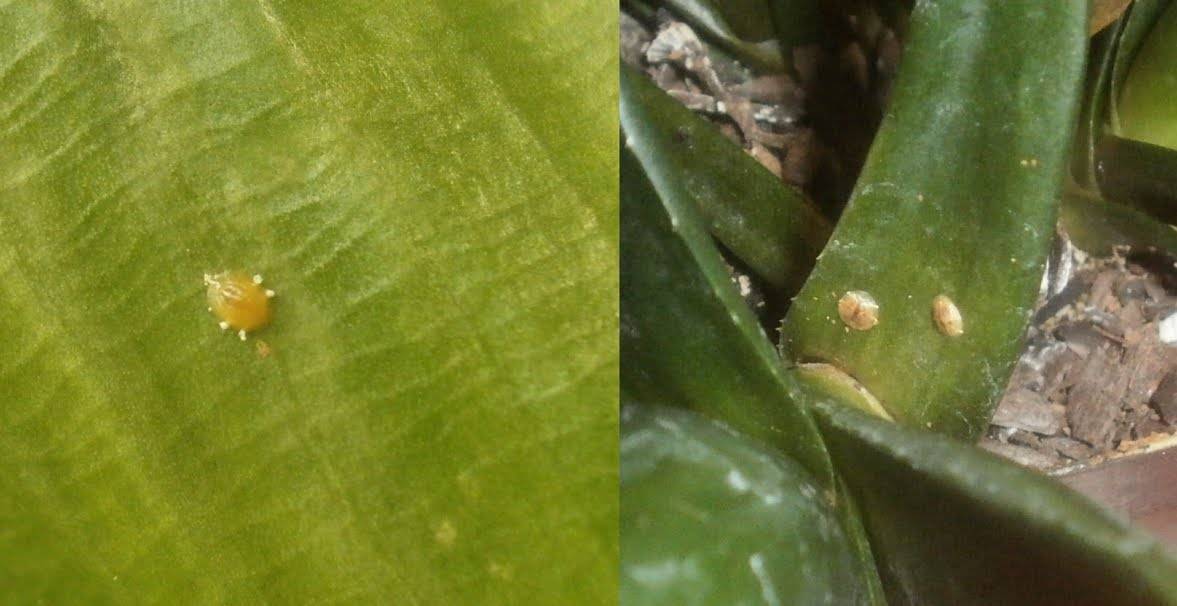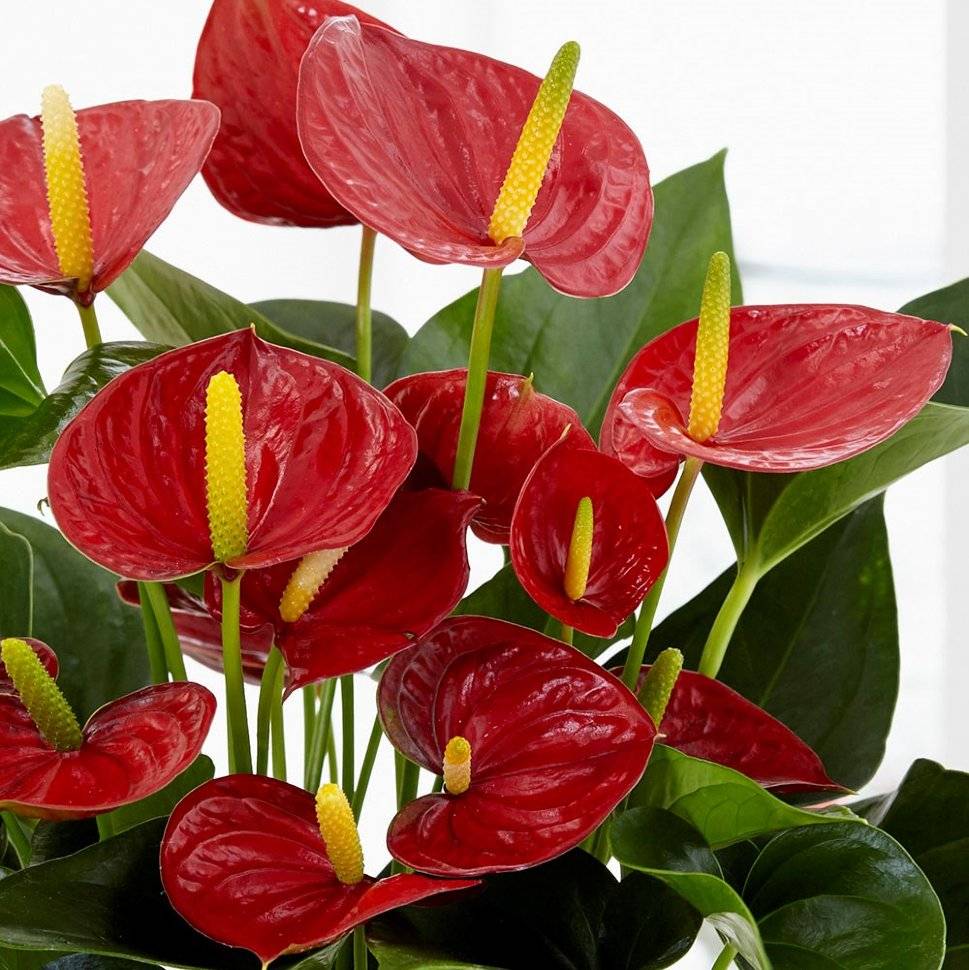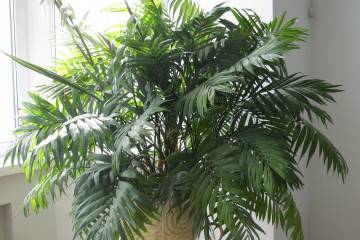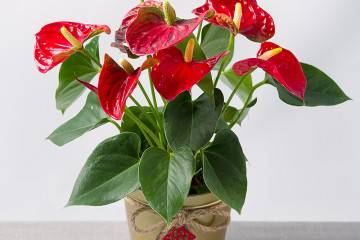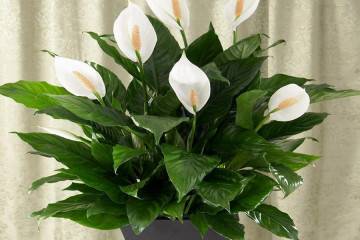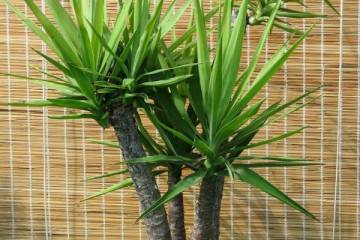Anthurium flower - why leaves and flowers turn black and dry
Content:
An unusual and beautiful Anthurium flower will perfectly complement your home collection. But it happens that its leaves and flowers begin to blacken and dry. This article discusses in detail anthurium, why its leaves and flowers turn black and dry, and also how to save the plant.
Causes of blackening of anthurium leaves
Improper care and temperature conditions for the location of the plant often lead to the fact that the leaves of anthurium turn black. To figure out what reason influenced the plant, all possible ones will be analyzed in detail in the article.
Diseases
A variety of diseases can appear in both indoor and garden crops. Not insured against diseases and anthurium. If the leaves have dried up, spots, plaque have appeared, then such a plant should be quarantined until it recovers, so as not to harm the rest of the flowers. Treatment should be started as soon as possible.
The first possible problem is rust. It begins to appear first on the stems and leaves, looks like brown spots of different sizes. As a result, the leaves fall off, and the plant, after some time, completely disappears. This happens in dry air.
Septoria is a fungal disease that actively develops in a warm and humid environment. Yellow spots and brown edges appear, the leaves dry out quickly.
Soil fungi attack the roots, which rot and wither. The appearance is associated with the use of infected soil, or the plant was infected already upon purchase. Excessive watering and inadequate drainage in the pot are also causes.
Powdery mildew appears white. Distinguish between false and real. The latter is treated with fungicidal agents. It appears due to high humidity at high temperatures, sudden temperature changes, improper care. When pale small pimples appear, treatment for mealy fungi should be started.
Fusarium and gommosis are also found in anthurium. The reason is poorly disinfected soil.
Anthurium can also turn black from the cescospore fungus. It is not as harmful to the plant, but it can affect its appearance. At first, it manifests itself in the form of yellow spots, which then turn into brown, as a result, the leaves dry up and fall off.
Pest attack
Another reason why the leaves of anthurium turn black is the attack on it by pests. The main parasites are scale insects, aphids, thrips, and spider mites.
The scale insect is a tiny armored bug that is very difficult to spot. Careful plant care must be taken. These bugs deprive the indoor flower of energy, as a result, it fades and dies.
Thrips larvae can be seen on the back of the leaf, they look like black dots. They can infect the plant at any time of the year, but are more active in spring and summer. Larvae and adult thrips are also dangerous.
The main signal for the appearance of aphids is leaves that are sticky to the touch. Aphids are an insect that multiplies very quickly throughout the plant.
If a cobweb is seen on a flower, it means that a spider mite has settled on it. It leads to the drying out of all parts of the anthurium - leaves, flowers, shoots.
Incorrect fertilization
From the use of fertilizers in which there is a large amount of calcium, black spots may appear. Lack of boron, zinc and iron and an excess of calcium lead to rapid aging of the plant.
Anthurium should be fertilized in spring and summer once every 3 weeks. These flowers are very sensitive to both excess lime and excess minerals. Therefore, top dressing should be diluted.
Improper watering
Leaves darken at the edges when not properly watered. Watering with cold tap water and with an increased lime content in it is unacceptable. In summer it is watered with warm water at room temperature, in winter the water temperature should be 18 ° C.
What to do to save a flower
It is worth starting to save the plant with proper care for it, and then carry out those procedures that correspond to the type of disease.
With a fungal disease or infection with bacteria or viruses, spontaneous salvation is unlikely. Therefore, first of all, they get rid of all the leaf plates that are burned so that the infection does not spread to other domestic flowers.
The appearance of a gray bloom on flowers, leaves, as well as reddening of the lines and tips indicates a gray mold disease. Young and newly transplanted anthuriums are more often infected. This is mainly a consequence of abundant watering, poor-quality drainage, ignoring the removal of dry and dead parts of the plant, neglecting airing the room.
With the development of septoria, it is necessary to spray the leaves with a chemical fungicide, which contains a large amount of copper. If rust develops, it is worth spraying the shrub more often, increasing the humidity in the room, and the affected greens are cut and burned.
To cure anthracnose, you need to reduce watering and spray with copper fungicides from a spray bottle. You can also add the chemical abiga-peak to the soil substrate.
To eliminate fusarium wilting, you will have to treat the plant with copper insecticides and spray the soil substrate with glyocladin. It is best to get rid of all the soil, before transplanting, place the plant for a short time in a weak solution of potassium permanganate and plant it in fresh soil. The soil is disinfected.
If a scabbard is found, it is necessary to immediately carry out mechanical cleaning and apply insecticidal preparations. When fighting thrips, these remedies are also used.
Finding a spider mite early on can give the flower a warm shower. If there are a lot of insects, then special preparations are used against this parasite. Treatment for this parasite will take a long time. The cobwebs must be removed, the pot and the window sill are wiped.
What to do for prevention
It is easier to prevent damage than to cure a severely diseased plant, so periodic prophylaxis is needed. The main preventive actions against diseases are reduced to observing the rules of care and providing the necessary conditions.
Pest prevention measures are detailed below. It is more difficult to deal with them, because they can be brought from the street on clothes or with a new flower.
A number of measures to reduce the risk of infection with parasites:
- all new flowers should be kept away from others for 14 days;
- if the soil seems suspicious, then it is better to transplant the flower into a new one;
- in spring and summer, it is worth examining the leaves for the presence of parasites at least once every 7 days; in the autumn-winter period, you can do this less often;
- once a month, you can treat the leaves with soapy water;
- if there is a suspicion that pests have started on the plant, then it is better to carry out the treatment with insecticidal solutions immediately.
Helpful tips for proper care
When growing a flower, the following points should be considered:
- monitor the humidity in the room. You can increase it with a humidifier by placing vessels with water next to the flowers, spraying the leaves from a spray bottle;
- place the plant away from direct sunlight;
- water the anthurium when the topsoil is slightly dry, and using only settled water at room temperature, immediately drain the excess from the pan;
- when planting, provide a good drainage layer that will protect the roots from excess water;
- place the plant where cold air and drafts will not get on it;
- feed the plants regularly, keeping track of the amount of feeding.
It is possible to save your favorite home anthurium from diseases. The sooner treatment begins, the more chances you have to keep it. But, of course, it is better not to allow damage to the leaves and buds, providing them with proper care and the necessary conditions.
